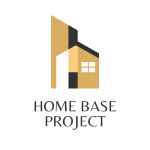Jump to:
What is Mold, Anyway?
Mold is a moisture-thriving type of fungus found everywhere. They can be black, white, orange, green, or purple. Molds reproduce by means of tiny, lightweight spores that are airborne. When they land in a damp area, they can grow.
When mold is growing on a surface, spores can be released into the air where they can be easily inhaled. If you’re sensitive to mold and breathe a number of spores, you could encounter health problems.
Mold Problems and your Health
For some, inhaling or touching mold spores can cause allergic reactions. Milder symptoms might be sneezing, runny nose, red eyes, and rash. People with serious mold allergies may have more severe reactions, including shortness of breath. In people with asthma, breathing in spores can also trigger an asthma attack.
In addition to people with allergies and asthma, others who may be more sensitive to the effects of mold include:
- Children
- The elderly
- Immuno-compromised people
Exposure to mold can bother your eyes, skin, nose, throat, and lungs. Here’s what evidence of mold problems to look for so that you can take care of yourself and your home or business.
Visible Mold
It might look like a little dirt you can ignore, at first. In fact, it could actually be a glimpse of a small patch of mold. If conditions are right, it could bloom quickly. A small bother can turn into a major problem almost overnight.
That small patch can be a signal of a larger colony growing on the other side of your walls.
So what does it look like? Just dirt? No! It can be white and thread-like or black and blotchy. Visible mold can be the slimy dark spots on your bathroom shower curtain or the slick orange film that forms on your drain. It can appear in small clusters of spots or cover a surface.
If you can see any mold growing (even if it’s only a little bit) this is your signal to call a professional to come out and provide a mold inspection.
Moldy Odor
Do you detect a pungent smell taking over a space making it almost impossible to be in? Most people describe the smell of mold as musty and stale — somewhat like the odor of wet socks, rotting wood, or a wet swimsuit left in a bag. That persistent odor can indicate that mold is at the root of your problem.
Mold generates microbial volatile organic compounds (MVOC), which are the principal cause of a stinky home. Various MVOC (and, therefore, odors) are discharged throughout the bacteria’s development.
The strength of the smell is often unrelated to how dangerous the mold colony which might be lurking behind walls can be for our health. For example, mold creates a large number of spores during its reproduction, but very few MVOCs. This means that the odor will be faint and mild, but spores will be present and very active.
Water Stains
Mold needs two main things to thrive: moisture and food. Are water stains an absolute indication of mold? Not always! Water stains are ALWAYS an indicator of a moisture problem, however, and if that moisture problem is not taken care of, mold growth is probable.
Signs of water damage include yellow, brown, or copper-colored stains, drywall tape rippling, peeling or bubbling wallpaper/paint, and bubbling, or warped flooring. Water rings can be a sign of a pervasive leak that is continually feeding mold growth.
No rings might indicate an isolated incident, and the water stain discoloration is simply mineral deposits from the water and not mold. The best practice is to call a professional to scope out the damage to best advise on your situation.
Cracks in Walls
Clean, sealed, and dry sheetrock is not mold-friendly. The opposite is true, too. Cracks in walls can occur when the surface sheetrock is damp. By measuring the wall cracks outside of your home, you can determine how severe the damage. There are five different wall crack damage categories:
- Negligible: Wall cracks less than a millimeter wide aren’t much concern, and they’re not signs of a bigger problem.
- Slight: Wall cracks between 1-5 millimeters wide can often be fixed by filling them in and repainting.
- Moderate: Wall cracks 5-15 millimeters wide indicate possible structural work.
- Severe: Wall cracks up to 25 millimeters typically mean major structural problems, including potential replacement of the entire section where the crack is located.
- Very severe: Any wall cracks bigger than 25 millimeters wide are severe and almost always mean total reconstruction.
Peeling Paint
Peeling and bubbling paint is another indicator that the surface below the paint is damp, and therefore breeding ground for mold colonies to run rampant. While it’s physically possible to paint over mold, it will always reappear if you don’t address the original problem. Using mold-resistant paint works to prevent mold, but it won’t kill it once it’s started to grow.
Swelling in Walls
The drywall behind your walls is like a sponge that will become saturated and begin to swell. Proper mold remediation will be needed to address the water damage or mold can occur within 24-48 hours of the water damage. Water leakage can be classified into three different categories:
- Clean water is uncontaminated and typically comes from a sink, toilet, or water line.
- Grey water often comes from dishwashers, laundry machines, and other appliances and contains substances that could be harmful.
- Blackwater is the most contaminated and usually comes from a sewer backup or stagnant water. This is very unsanitary and could result in serious illness.
It is important for your health and safety to determine the source of the leak to address the corrective measures best needed to clean your environment and rid it of unwanted leaks and mold production.

